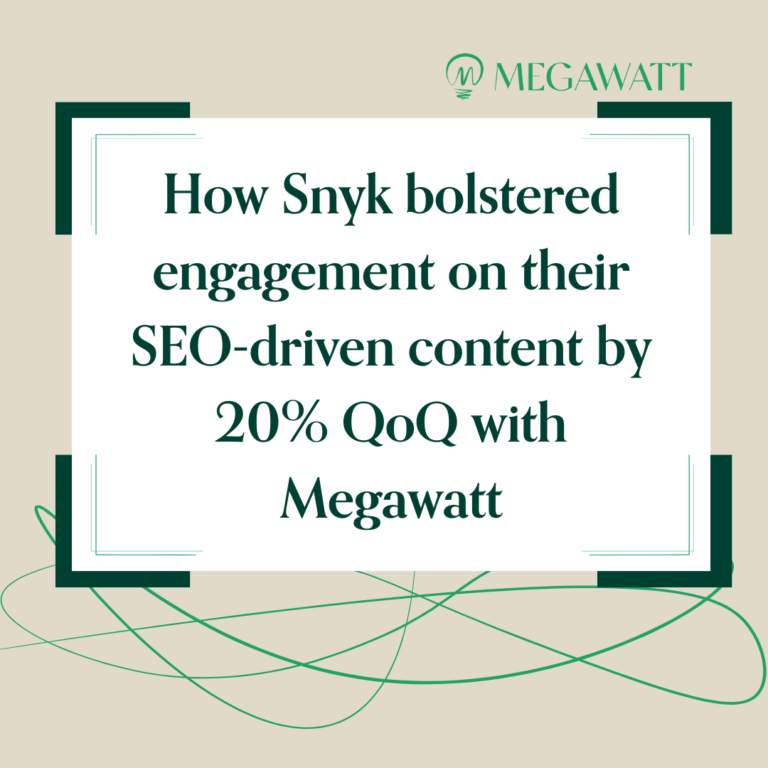YouTube Optimization Checklist: How to Attract More Video Views
Over the past decade, video has taken the content marketing world by storm. According to recent research from Wyzowl, 91% of businesses plan to use video as a marketing tool in 2023 — and 91% of people want to see more video content from brands.
Importantly, marketers report increased ROI from video, using the medium to drive website traffic, generate leads, and increase sales. But video’s power depends on your ability to distribute your content and amass viewers. A video serves no purpose if someone doesn’t see it.
Search engine optimization is key to getting the highest ROI from video investments. By optimizing videos for search — particularly on YouTube — brands can increase organic viewership and amplify the impact of video content.
The power of YouTube for B2B brands
YouTube is the most powerful distribution platform for video content, with 2.5 billion monthly users watching over one billion hours of video content daily. It is one of the largest search engines in the world (second only to its parent company Google).
For brands, there are relatively no barriers to entry. Posting videos on YouTube is as easy as setting up a (free) channel through a Google account.
Enterprise and B2B brands like Salesforce, Cisco, and Slack all have a presence on YouTube, posting product demos and announcements, customer success stories, and brand-building videos about corporate social responsibility initiatives.
Sign up for Dear Wattson, our weekly newsletter, where all content conundrums are answered!
YouTube optimization at a glance
One of the main ways in which users find video content on YouTube is through the platform’s search bar. Like its owner Google, YouTube’s search engine surfaces videos based on an algorithm that identifies the most useful, relevant, and popular content related to user queries.
Therefore, to reach more viewers on YouTube, brands must optimize their video content just as they would optimize a blog post for Google search. This isn’t just a good idea for YouTube alone: because of the relationship between the two entities, optimized YouTube videos also appear within Google (in results pages and a “video” tab), reaching viewers who may not even be searching for video content specifically.
Understanding the YouTube algorithm
Before diving into the tasks outlined in our YouTube optimization checklist, it’s crucial to understand how YouTube evaluates the quality and relevance of videos.
For videos that appear on a user’s home screen upon login, YouTube makes an educated guess about what the user will be most interested in. This educated guess is informed by machine learning that aims to understand user behavior and prioritize videos users will most likely watch and interact with — based on viewer personalization and an evaluation of video performance.
Viewer personalization uses signals based on past user behavior (for example: what videos someone watched during a previous session) to surface a unique set of videos for each user. Performance is based on signals of satisfaction from viewers — including watch time, shares, engagement metrics, and watch history. With personalization and performance in mind, an avid watcher of golf-related videos may be served a trending video about “PGA Tour highlights of the week” on the YouTube home page upon their next sign-in.
When viewers use the YouTube search bar, videos surface based on three main elements:
- Relevance: Looks at how well the video’s identifying information (titles, tags, etc.) matches a search query.
- Engagement: Looks at user signals that indicate how relevant a video was (such as watch time), related to the search term for which it populated.
- Quality: Looks at signals that help determine which channels demonstrate expertise, authoritativeness, and trustworthiness on a given topic.
It’s important to note that YouTube also references the “four Rs,” which state a commitment to limit disinformation and videos that violate YouTube’s policies in favor of content from trusted creators and authoritative sources.
***
You might also like:
The Keys to a B2B Video Marketing Strategy
***
YouTube optimization checklist
With an understanding of how the algorithm works, creators can optimize their video content and channels to increase the likelihood that videos appear as a top result for a desired search query. This simple YouTube optimization checklist includes five steps:
- Create content around the right keywords
- Keep user experience in mind
- Consider your filename, title, and description
- Use tags to your advantage
- Build consistency across your channel
1. Create content around the right keywords
As with traditional SEO, keyword research should always be your first step. Use keyword planning tools to identify search terms relevant to your brand, product, or solution and that generate enough search volume to justify the investment in video content. For B2B brands, this might begin with a look at:
- Industry terms.
- Product features and differentiators.
- Competitive offerings
- Terms related to thought leadership or your company’s unique POV.
Once you have a solid list of terms that are relevant to your business and popular among searchers, you can determine the types of videos that make the most sense for you to create.
2. Keep user experience in mind
A custom, eye-catching thumbnail image is the first step toward encouraging viewers to click on your video. Once they do, engagement is critical. As stated above, YouTube looks at user experience signals to quantify how engaging your video is for viewers. These signals include:
- Audience retention: The percentage of your video people watch (the larger, the better!).
- Comments: The number of comments that viewers leave on your video.
- Ratings: The number of viewers who click thumbs up (“I like this”) versus thumbs down (“I dislike this”) on your video.
- Subscriptions: The number of viewers who subscribe to your channel after watching your video.
- Social shares: How many viewers chose to share your video on social media.
With this in mind, you want to ensure your content provides value to viewers — from start to finish. You also want to encourage users to share the content with their networks and subscribe to your channel for other similar videos that may be of interest. A great way to engage users in additional video content and encourage channel subscriptions is to use an end screen in your video that promotes the other videos in the form of a “you may also like” message.
3. Consider your filename, title, and description
YouTube uses your video’s identifying information to judge how relevant the video is to specific search queries. It’s essential to include your target keyword in your video filename and your title. The description of your video should also accurately and concisely explain what’s included within the content. Aim for a description that is longer than 200 words and uses your keyword, as well as some related terms.
4. Use tags to your advantage
Tags are descriptive words about your video that YouTube uses to categorize and learn about the subject matter of your video. Although they play a minor role in the discovery of your content (and aren’t visible by users) they are still important — especially if the topic of your video is commonly misspelled or referred to in multiple ways (for example, “data breaches” and “hacks”). Create tags using your desired keyword, relevant variations of the keyword, and some related terms.
5. Build consistency across your channel
YouTube rewards authoritative, trusted creators. As part of your YouTube optimization efforts, ensure that your channel includes multiple videos about key topics related to your brand and industry — displaying breadth and depth of the topics for which you hope to rank. Treat your channel like your blog. Aim to post consistently and at a predictable cadence.
Organizing your videos into categories or playlists can be a great way to identify the topics you cover on your channel (and lead viewers to other similar content they may be interested in).
A robust description of your company in the “About” section of your profile and links to your company website and social media channels can also beef up your channel’s authority.
Take your video strategy to the next level
Are your videos attracting organic views and providing a solid ROI? If not, it’s time to review this YouTube optimization checklist to ensure you have set yourself up for search engine success. Approach video optimization the same way you’d approach optimization for more traditional written content:
- Focus on providing value to users.
- Position yourself as a credible authority on the subject matter.
- Finess your search engine signals (titles, descriptions, etc.) to communicate the topic and value of your work.
If you’re looking for some help getting started, Megawatt provides robust SEO capabilities for written and video content alike.
Contact us today to learn more about our video services.






